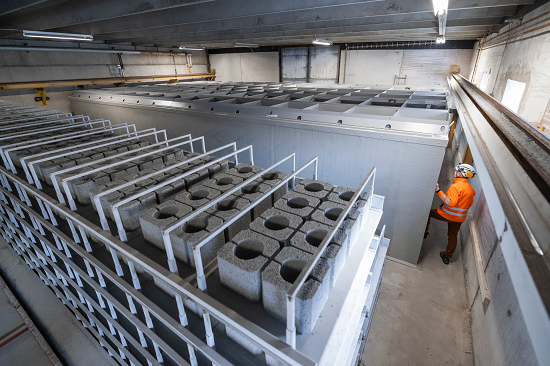 Friday, September 27, 2024
Friday, September 27, 2024  Friday, September 27, 2024
Friday, September 27, 2024 
Concrete has been used in construction for thousands of years, it’s everywhere. But its production is a major contributor to global carbon emissions, and we’ve seen much research aimed at reducing its environmental impact. One such project spun out of VTT Finland is looking to make concrete manufacture carbon negative.
The VTT Technical Research Centre of Finland has been looking into the negative effects of carbonation – the slow process where carbon dioxide gets reabsorbed by concrete over time and can lead to the corrosion of steel reinforcements – for decades.
In the late 2010s, researchers started to focus on turning these problems into an advantage. “We decided to develop carbon negative concrete without knowing exactly how to do it,” said VTT senior scientist Tapio Vehmas. “We started experimenting in order to find out how carbon dioxide functions in concrete, how carboaluminates are formed, and how this process replaces cement and The search began for suitable low-carbon binders. Those experiments revealed that blast furnace slags from the steel industry could be carbonated, and worked well as an effective binder to replace normal cement in concrete.
“This did not work out straight away, but we had to develop the material concept and look for appropriate activators,” added Vehmas. “The binder’s final material combination consisted of slags, green liquor dregs and bio-ash.”
The project then turned its collective eyes to commercialization, building an automated carbonation pilot system that binds CO2 into precast concrete at atmospheric pressure, and installing it inside a container that was positioned next to a concrete plant in Hollola in southern Finland. Owner of that plant, Rakennusbetoni- ja Elementti Oy, subsequently used the technology to create carbon-negative yard paving for installation at a Skanska construction site.